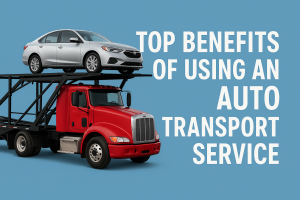Car shipping prices can vary widely, but they’re always rooted in some core factors. Learn what they are and how they may impact your model.
Key Takeaways
- Time of year influences your shipping quote
- Transport type is your choice, but with related pros and cons
- Long distances may actually save some money
- Vehicle dimensions and conditions determine quotes
Even a ballpark figure for a “standard” auto transport quote is a moving target. There are several key variables that not only change how much shipping costs for different customers but can also affect pricing for the same individual depending on their schedule. Let’s start with the variables of most interest to vehicle owners — namely, the ones they have control over!
1. The time of year
Assuming there’s no rush to reach your location, you have the luxury of selecting the month your vehicle ships. Seasonal strategy can give you some leverage on car shipping prices, but there are a couple of caveats.
For example, July to August is quite literally the hot period for car carriers. Business booms because people have more time to make house moves, relocate for work, etc. Auto carriers know the demand is there, so they’ll hike their rates accordingly to cash in. Conversely, you may strike lucky and find a carrier who’s willing to undercut the competition during such a busy time.
December to February is the auto transport low season. The same number of carriers have to make money, meaning many are willing to drop prices to compete for fewer contracts. This is a win for the customer; however, nasty weather conditions can lead to longer travel times or risky/alternate routes for carriers. Both of these can cause a shipping quote to spike.
There may also be a rush of “snowbirds” heading to sunnier climes and creating a level of demand similar to summer. The takeaway here: consider Spring. It’s parked right between two potentially pricey periods and may reduce your car shipping price.
2. The transport method
This is the second cost factor drivers have some control over. Why only some? You’re of course free to choose from the various vehicle carrier options. They each come with their pros and cons, but open carrier shipping can be up to $421 cheaper.
However, there’s a payoff: Open carriers don’t afford the protection of enclosed ones, which leaves the car open to increased risk of road damage, in-transit knocks, or theft. There is the option of top-loading, which will see your car racked on the upper level of a rig, thus lowering the potential impact of road debris, but again this adds more to the bill.
Now, let’s say you’re shipping an extremely valuable car like a classic, antique, vintage, or luxury model. Is open carry really a good choice? This part of your car shipping price ultimately depends on the risks you’re willing to entertain in order to save now (but potentially pay later).
Now, let’s review the factors that no car owner has control over.
3. Distance traveled
Fuel consumption and mileage are two carrier expenses no customer can avoid. Generally speaking, the farther your car is going, the more you may have to pay and the longer and harder the carrier has to work to get it there, which means more labor costs. Toss in tolls and the cost of weigh stations across the route, and you’ve got two more added expenses.
There is a bright side: Shipping longer distances could cost you less per mile than a short trip since some auto carriers don’t want to lose potential customers on the former or income from the latter. Ask any carrier you’re considering if they offer lower rates over greater distances.
4. Door-to-door vs terminal-to-terminal
The convenience of having the shipper pick your car up from your home/place of business and drop it off at or nearby your pre-selected destination comes with a higher price. This is because it can sometimes take extra effort for the carrier to negotiate unaccommodating roads in order to drop your car off as desired.
Alternatively, you could opt to drive the car out by yourself to a transportation terminal, where it will be left and picked up before being dropped off at another of their terminals. You’ll have to go pick your car up there too. This might seem cheaper, but terminal fees quickly add up to make it an expensive option.
5. Vehicle dimensions and condition
Height and width affect how much space your vehicle takes up on the carrier’s rig. If your car takes up two spots, you’re going to be charged accordingly because the carrier could have transported another car along with yours.
Width and height go beyond the “factory floor” dimensions and includes any additions such as roof racks, so factor those in. The heavier a car is, the more it weighs on the rig and the more fuel is necessary to transport it. This raises the carrier’s expenses and yours as a result.
Not every car is ready to roll onto a carrier, either. Some have to be transported in partially or completely inoperable condition. This makes the carrier’s job tougher when it comes to getting it on board and will increase the car transport price.
6. Insurance costs
Auto carriers will have some degree of insurance in place to protect themselves and your vehicle. The possible added expense here is that their level of coverage may not be satisfactory for your vehicle’s needs. If so, you’ll have to look into auto transport insurance as an extra layer of security. This raises the initial car shipping price but provides peace of mind and a financial buffer against any damages.
7. The bidding process
Finding a carrier by using an auto broker as opposed to speaking directly to carriers triggers a bidding process. The carriers vie for your contract, and not every carrier who runs your required route will be available on that given day. The number of carrier companies bidding on your business thus varies at any one time, which adds another random element that makes it hard to predict what your quotes will be.
Mercury Auto Transport uses the above factors when calculating your quote. We’re a full-service auto shipping company that connects customers with reliable carriers across America, and we keep our process transparent. Call us today to see how we can help!






